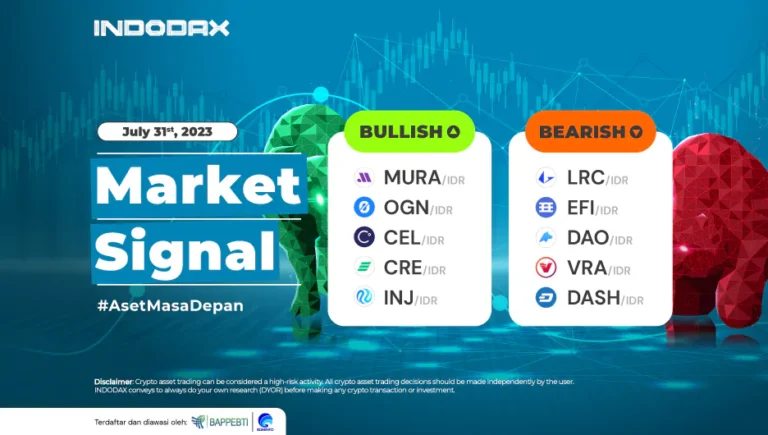The Ichimoku Cloud indicator is known to be accurate in determining the direction of the trend and support and resistance levels, so it can assist in deciding to buy or sell signals and stop levels. The indicator created by a Japanese analyst named Goichi Hosoda in 1930 is similar to the Moving Average (MA) indicator. However, a few additions to this indicator make it more accurate and reliable.
To use the Ichimoku Cloud indicator, you can access indodax.com and log in with your account. After that, select a crypto asset, and click Advanced Chart. You need to look for Ichimoku Cloud in the indicator column and click it. Then a graph display with the indicator will appear.
The main difference in calculating the Moving Average indicator is that the 50% method of high and low levels is used in each candle on the Ichimoku Cloud indicator. So, there are four critical parameters in this indicator.
- Tenkan Sen or red color curve. This parameter is used as a minor support or resistance level indicating the direction of the trend. If the angle moves downwards, the market is in a bearish state. Conversely, if the curve moves upwards, then the market is in a bullish condition, and sideways if the curve moves horizontally.
- Kijun Sen or blue color curve. This parameter is used as a confirmation of the direction of the trend, as a support or resistance level, and can also be used as a benchmark to set stop levels. The thing to note about the Kijun Sen and Tenkan Sen parameters is the intersection between the two, where the meeting of these two parameters is the same as the intersection between two typical Moving Average indicators. If the red curve intersects the blue curve from top to bottom, it indicates a signal to sell. This is because if the red curve is below the blue curve, it means a bearish situation that will continue. On the other hand, if the red curve crosses from the bottom to the top, it indicates a signal to buy or buy. This is because if the red curve is above the blue curve, it means a bullish situation that will continue.
- Chikou Span or green color curve. This parameter is used as the confirmation of the entry signal. If the green curve cuts the price from top to bottom, it signals a sell signal. This is because if this curve is down, it indicates a downtrend. On the other hand, if the green curve cuts the price from the bottom up, it means a signal to buy. This is because if this curve is rising, it indicates an uptrend.
- Cloud or Kumo. Cloud or Kumo is the most critical parameter that is always considered in using the Ichimoku Cloud indicator, which shows areas of support or resistance. Cloud is the distance between Senkou Span A and Senkou Span B.
If the price moves above the Cloud, the upper Senkou Span curve is the first support, and the lower one is the second or the following support. If the price moves below the Cloud, the lower Senkou Span curve is the first resistance, and the upper one is the second. If the price moves in the Cloud, the market is considered to be moving in a range or sideways manner. Clouds can change shape or thickness depending on the magnitude of the price change. Thicker clouds indicate higher market volatility.
Because this indicator is considered complete, traders usually do not use other companion indicators. Day traders use this indicator on daily time frames up to 1 hour. Timing for entry is seen on the Tenkan Sen and Kijun Sen parameters, while the momentum of price movements that are bullish or bearish can be observed on the Chikou Span parameter.








